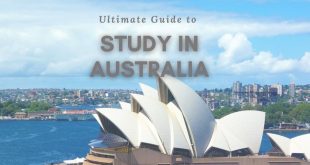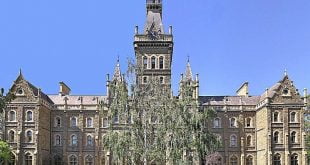When it comes to higher education, Australia has an established reputation of excellence. Being one of the world’s most sought study destinations, the country is home to several universities that consistently appear in the global top 100 universities. Add to that the wide range of study topics and programs as well as research opportunities, you have all the conditions met if you consider Australia as your next study abroad destination. Here’s a summary of everything to know about the higher education system in Australia.
Table of Contents
Facts on the Australian higher education system: Why Australia for higher education?
When it comes to education in general and higher education specifically, Australia has everything to boast about.
Starting with the fact that it’s the third study abroad destination in the world with an international student population of approximately 700,000. And to testify about the longstanding success, Australia counts about 2.5 million alumni population worldwide.
Moreover, 7 of Australia’s top universities are also among the world’s top universities, constantly ranking in the 100 best globally. All of this to demonstrate that Australian education system is efficient throughout all levels.
Furthermore, the country is also resourceful when it comes to welcoming international students. Australia has in fact an Oversea Student Program which role is to facilitate crucial steps such as visa application for students from abroad.
Along with that, researchers from the country are welcomed with some of the best research opportunities. And this is no surprise, since Australia has been for a long time at the forefront of key scientific and technological breakthroughs: black boxes for planes, cochlear implants, IVF among many others.
And the country’s top-notch education has everything to do with all this!
What is so special about the Australian educational system?
There are a few distinctive traits that set the education system in Australia apart from what applies in other countries in the world. Here are the most important among them when it comes to tertiary / higher education:
The AQF system (Australian Qualification Framework)
Australia has this simplified framework which aims to ease up transfer between qualifications and courses from other countries to the Australian system. How does it work? The AQF system offers 10 levels of qualifications where students can simply identify the equivalent of their degrees when they’re going to pursue their studies in Australia.
This also offers students a wider scope of planning their career paths, since all qualifications are included in the system. Therefore, the 4 first AQF levels concern Certificate degrees. The 5th level corresponds to Diploma, then the 6th corresponds to Advanced diploma and Associate degrees.
The last 4 levels are for the usual university qualifications: level 7 is for bachelor’s degrees, level 8 corresponds to bachelor’s honor and other undergraduate degrees such as Graduate Certificate and Graduate Diploma. Level 9 corresponds to master’s and finally the 10th level is for doctorate degrees.
The education system in Australia highlights practical knowledge
Whether you get into academic or vocational training, the instruction you’ll receive will always emphasize on practical knowledge and prepare you to be job-ready. And it is the case even if you’re heading to a research program. You’ll be putting into practice concepts and ideas you’ve acquired while in the classroom.
Pathway programs that facilitate foreign students’ transition into the education system in Australia
Australia has some of the most efficient ways to welcoming international students. One of them is the opportunities for them to require additional support to get familiar with the Australian education system. This includes foundation courses as well as English language programs.
Students who have limited proficiency in English can then apply to an English language course before the beginning of their program at the university. And the country has more than 100 English language centers to choose from.
The Australian assurance of quality for higher education
Still in this approach aiming to support international student’s integration to its education system, Australia has Quality Indicators for Learning and Teaching (QILT) surveys. They allow students to compare higher education institutions as well as study courses, using data from thousands of surveys completed by current and former students, local and international ones. This is a great way to ensure you carefully choose your study path according to your career goals.
Moreover, for the higher education sector, Australia has a national regulatory and quality agency. It’s the Tertiary Education Quality and Standards Agency (TEQSA). Its role is to ensure the quality of education and to regulate higher education institutions in the country.
Besides, international students receive legal protection through the Education Services for Overseas Students (ESOS). This concerns 3 of their main rights: their well-being, the quality of their education experience and their access to up-to-date and accurate information while in Australia.
Types of higher education institutions in Australia
Australia has universities, public, private and international ones. Along with universities, there are other types of institutions offering higher education in Australia.
Public universities
This is the main provider of higher education in Australia. They award the whole range of degrees from a bachelor’s to a doctorate. The country has more than 40 universities with several of them ranking pretty high globally. Except for the international ones, universities in Australia receive funding from the government.
The training is mostly academic and research-focused. Moreover, it usually comprises theoretical and practical examinations as well as the completion of a thesis to conclude each degree program.
Read here our overview of the 10 best universities in Australia.
Private universities
There are only 3 private universities in Australia. What distinguishes them in the Australian higher education system is that they usually provide specific training or offer students the ability to complete their degree programs in a shorter period.
Institutes of technology
These are institutions that focus mainly on practical and technological education. This includes subjects such as design, nursing, sports science. But despite the name “Institute of technology”, these institutions might offer some academic study programs also. Many Australian institutes of technology also fall into the T.A.F.E category.
Technical And Further Education (T.A.F.E) institutions
These are institutions that offer vocational education training, the type of courses that include apprenticeships and work experience. This type of institution is operated by state or territory governments in Australia. They are the ones offering mostly certificates and diplomas, though some may have bachelor’s and master’s programs. The other advantage of T.A.F.E institutions is the flexibility they offer students, allowing them to part-time study while working at the same time in Australia.
Private colleges
Australia might have only a few private universities. However, the country has many private colleges, forcing students to do some research before choosing one, as they extremely vary in terms of education quality and the programs they offer. Without a thorough research, you might risk ending up in an institution providing low quality education at high prices.
Qualifications
Here are the main qualifications you can get at Australia’s higher education institutions:
Associate degree
This is a 2-year short-cycle degree program for mainly a career development purpose. You can apply for an associate degree if you are already working in Australia and don’t have time to complete a full bachelor’s degree. But it can also be a preparation for a bachelor’s degree or an advanced diploma in a specific professional field.
Bachelor’s
Like any undergraduate degree, a bachelor’s program in Australia requires 3 to 5 years to complete. It’s by definition the basic qualification to enter a field, where in theory, you develop the main skills, principles and knowledge allowing you to work in a field or pursue further studies if you want to.
Honours degree (bachelor’s)
This is either a continuation or a degree built on your bachelor’s degree. To earn an honours degree, students get an additional year of study during which they complete a research project or a research-focused coursework. In other words, this qualification allows you to get your bachelor’s degree with honors.
Graduate certificate
After your bachelor’s, you can choose to broaden the skills you have acquired or develop your ability in a new area of study. This is what the graduate certificate is for. The program lasts for 6 months following your bachelor’s.
Graduate diploma
If instead you want to pursue further learning or undertake an employment that requires a high level of expertise, a graduate diploma is what you need. It consists of an additional program after the bachelor’s that will take 12 months to complete.
Master’s degree in Australia
A master’s in Australia requires 1 to 2 years to complete. There are usually 2 types of master’s you can choose from: a coursework master and a research master. Both serve the purpose to train you to become expert in your field.
Doctorate
The highest level of qualification you can earn in the higher education system in Australia is a doctorate. Typically, you can complete this degree in 3 to 4 years. Moreover, it’s mostly a research program, with a little bit of coursework involved.
You can find more details on the subject in our guide on PhDs in Australia.
Australian school year
Universities and colleges in Australia usually have 2 major intakes. For the first semester, it usually starts in late February or early March and ends up in late May pr early June. The second semester on the other hand, starts in late July or early August and follows through to November. Usually, between the 2 semesters, students have the right to 2-to-4-week break. The summer break is usually the longer one.
This post is also available in fr_FR.




 Aljawaz Your guide to study abroad
Aljawaz Your guide to study abroad













